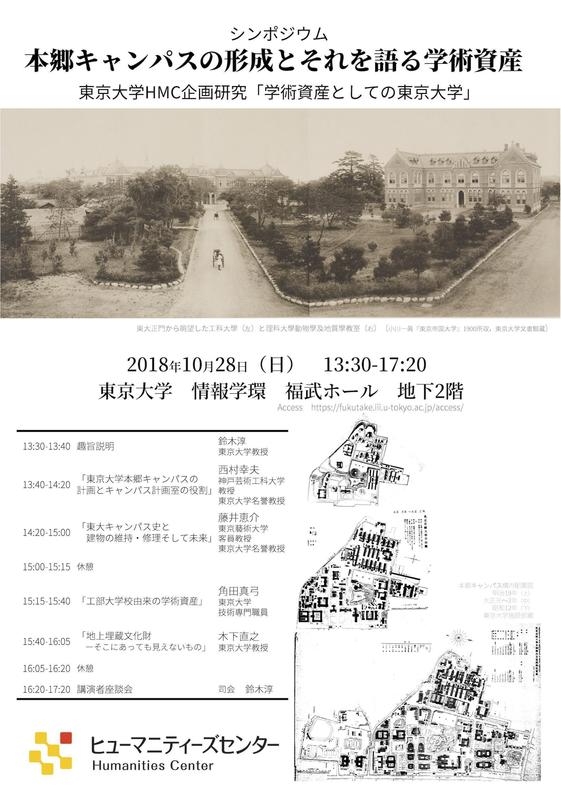“The Formation of the Hongo Campus, and the Academic Assets that Tell the Story”

When the word “Hongo” came to encompass the Akamon (Red Gate) and Yasuda Auditorium, it was no longer just a place name; it was synonymous with the University of Tokyo. This word usage shows that the collective of knowledge called a university is embodied in particular places and structures. If we consider that the University of Tokyo’s history goes hand in hand with the history of modern Japan, we can even say that the symbol of this—the Hongo Campus itself—is an academic asset stored in the university.
This symposium will focus on the work of the Campus Planning Office, which played a central role in the redevelopment of the Hongo Campus, and consider what sort of value was found in what items during the redevelopment process, and which of these could and could not be preserved. First, Professor Yukio Nishimura (Kobe Design University) and Professor Keisuke Fujii (Tokyo University of the Arts), who were members of the Campus Planning Office, will outline the process of campus redevelopment and preservation of structures from the perspective of architecture and urban planning experts, based on their insights on cultural assets. Additionally, Dr. Mayumi Tsunoda (Graduate School of Engineering, University of Tokyo) and Professor Naoyuki Kinoshita (Graduate School of Humanities and Sociology, University of Tokyo) will discuss the value of this university’s campus as an academic asset from the perspective of cultural resources study. This will be followed by a discussion among the three speakers, moderated by Professor Jun Suzuki (Graduate School of Humanities and Sociology, University of Tokyo), incorporating the perspective of modern Japanese history.


